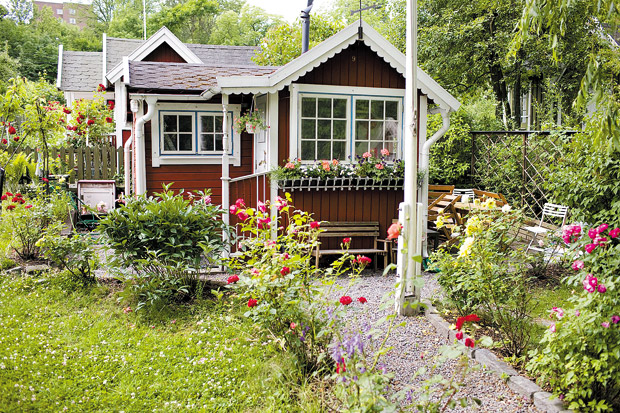While newly constructed homes are bigger than ever, most Americans still live in modestly sized or even small houses, and many are choosing to remodel rather than move. More than half of all American houses were built before 1980, according to the National Association of Home Builders. At that time, the average new home size was slightly more than 1,700 square feet, U.S. Census Bureau data shows. Meanwhile, interest in remodeling is at an all-time high, according to Metrostudy. Homeowners looking to renovate their average-sized homes don’t have to build costly additions.
Plumbing possibilities
Plumbing can be problematic in any renovation, but adding plumbing in certain smaller-house locations can be especially challenging. Traditional plumbing may require you to open walls and floors to connect to existing drainage lines, or break through concrete to add toilets, showers and sinks when finishing a basement.
Above-floor plumbing can solve a number of small-space challenges. For example, you may decide to add a powder room in the unused space beneath a stairway. In such a situation, a compact toilet like the Sanicompact from Saniflo installs conveniently in tight spots. Traditional plumbing can also be a challenge when you’re adding plumbing below a main level, such as installing a bathroom with a shower or even a second kitchen in a basement setting.
Right-sizing utilities
It may be a good idea to replace the water heater, especially if it’s 10 or more years old. An older water heater may fail, or worse, leak, causing damage to nearby floors and walls. Modern tank water heaters are more energy efficient, but also larger as a result of the insulation needed to achieve greater efficiency. If you’re replacing a water heater in an attic that’s accessed through pull-down stairs or in a crawl space, or adding one in a closet or out-of-the-way corner, a traditional tank water heater might not fit. Tankless water heaters require less room, solving space problems. Plus, they’re more energy-efficient because they heat the water only when you need it, rather than using fuel to maintain the temperature in a large tank.
Add natural light
If your home is older, it may have fewer or smaller windows than newly constructed homes. However, if you crave more natural light, you don’t have to sacrifice wall space to windows or incur the expense of opening a wall. Skylights and tube skylights can bring more natural light into a home. Modern skylights are energy-efficient and far less prone to leaks.
This article is courtesy of Brandpoint.
